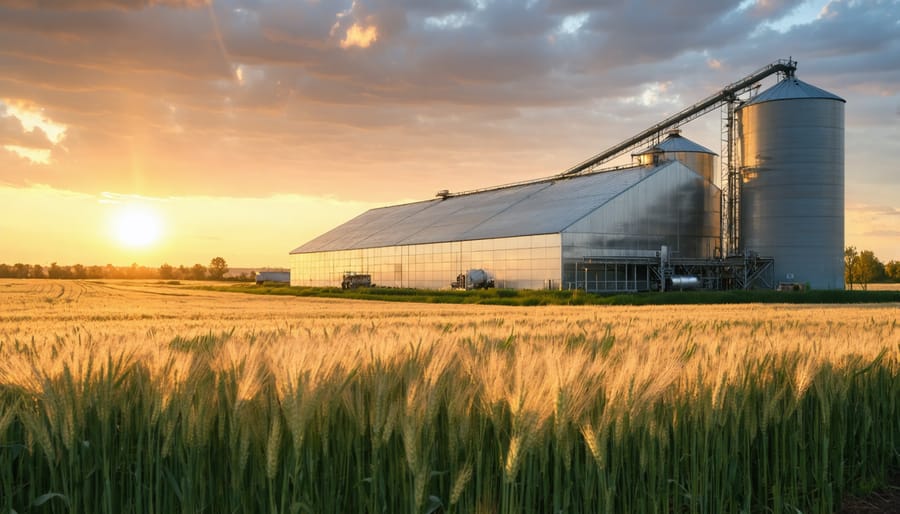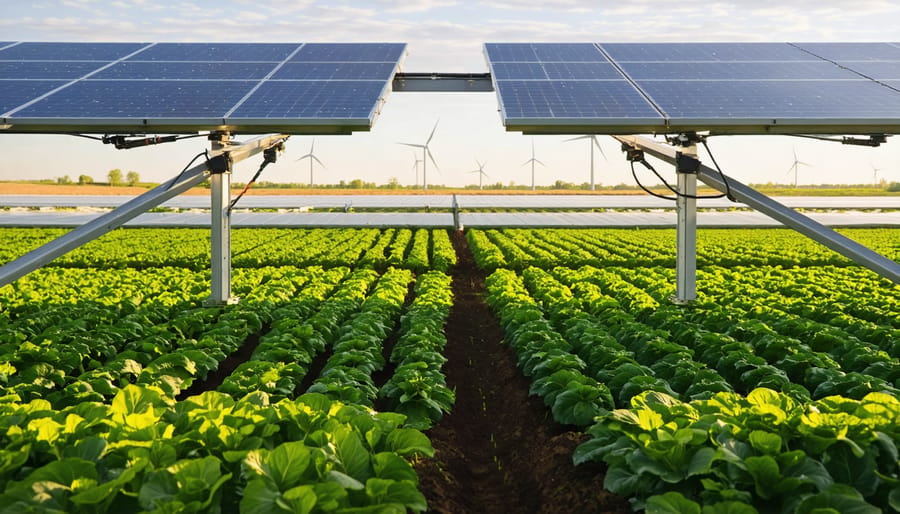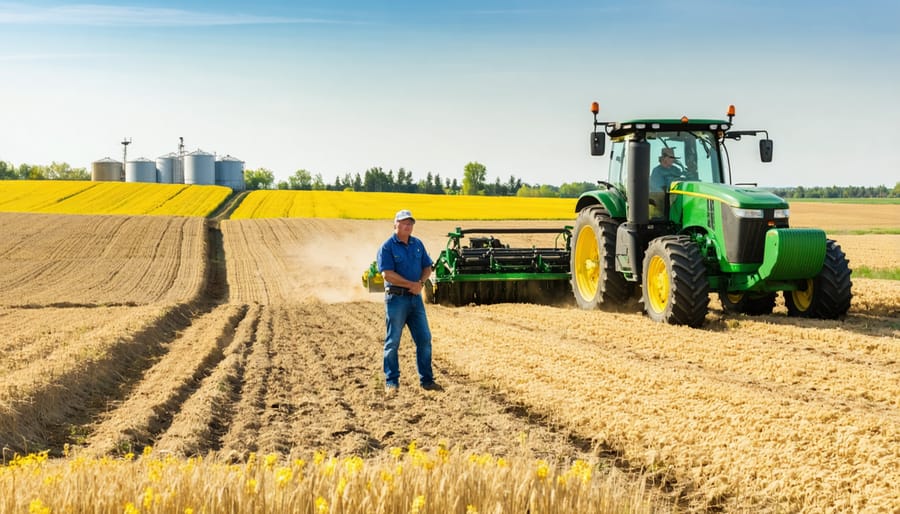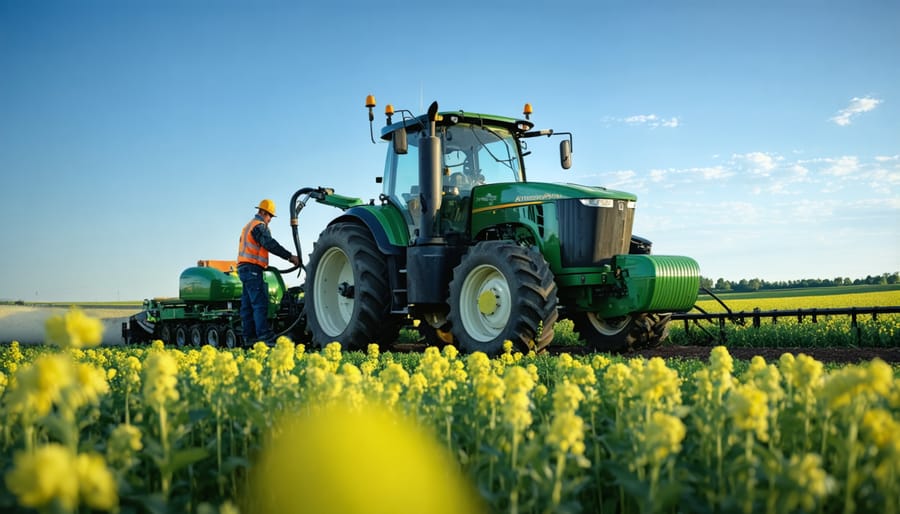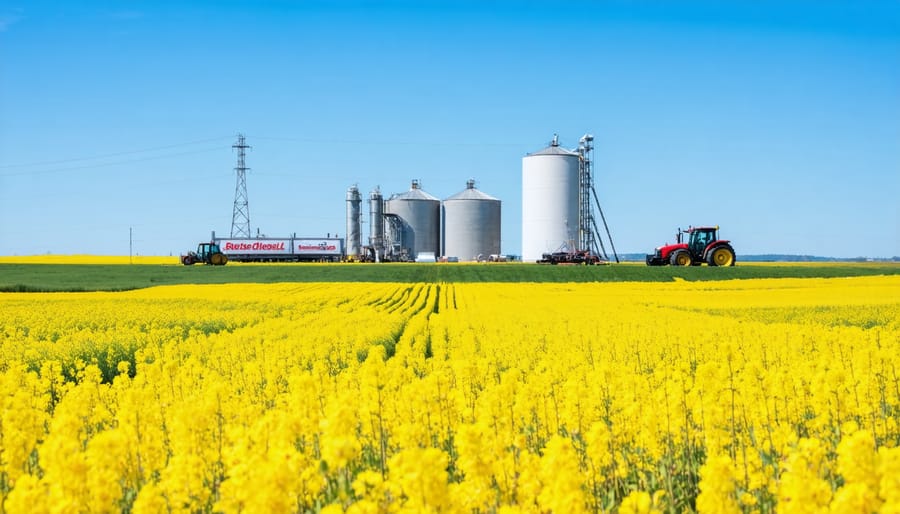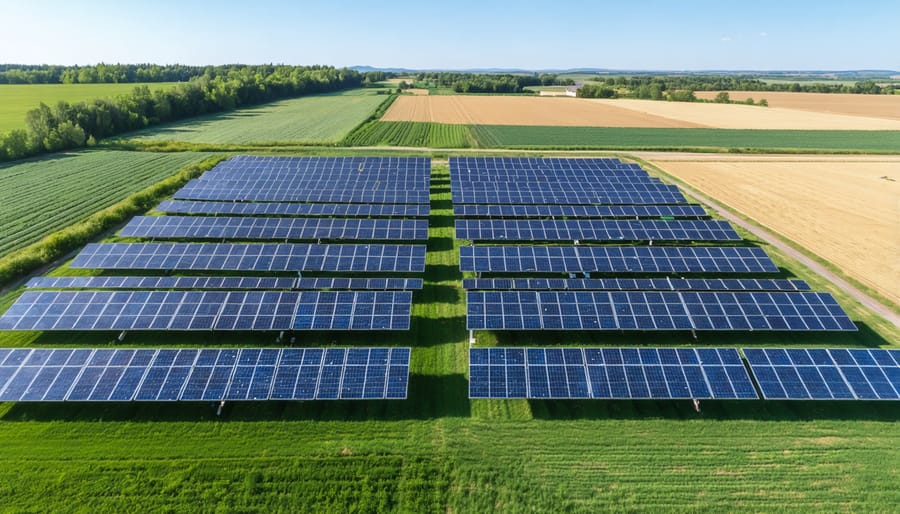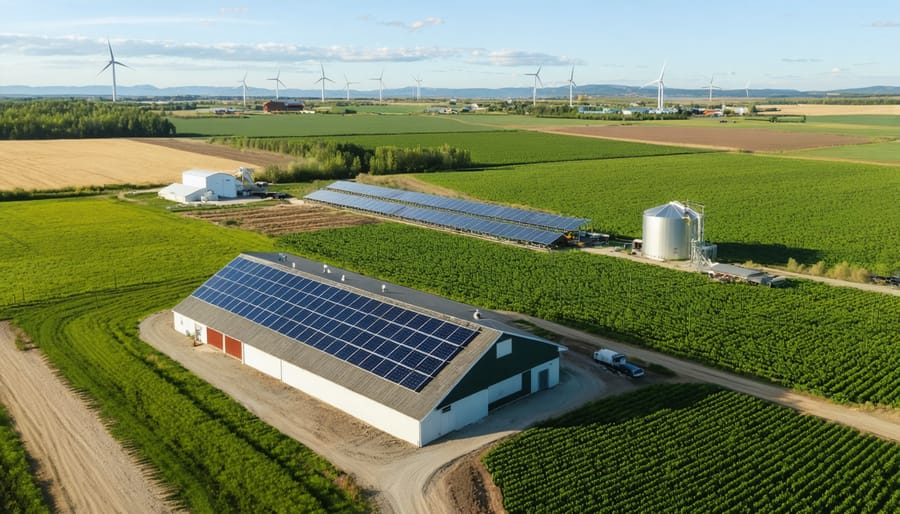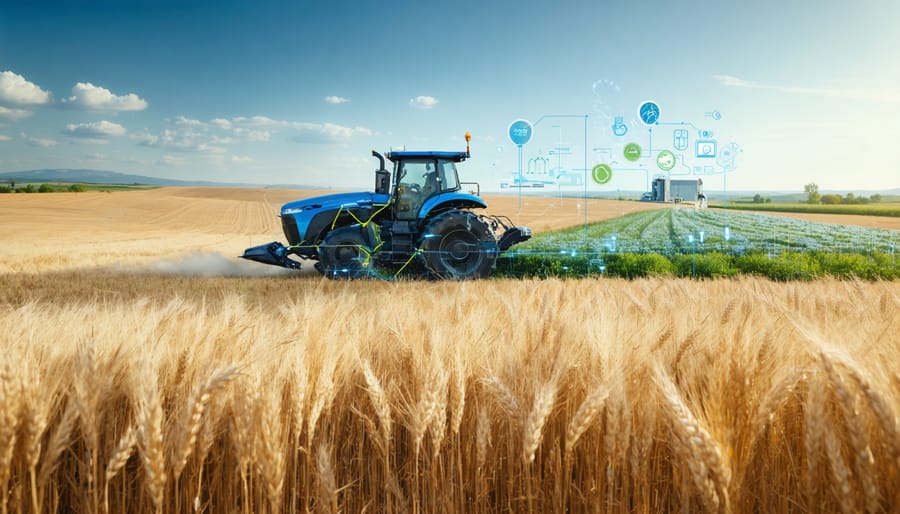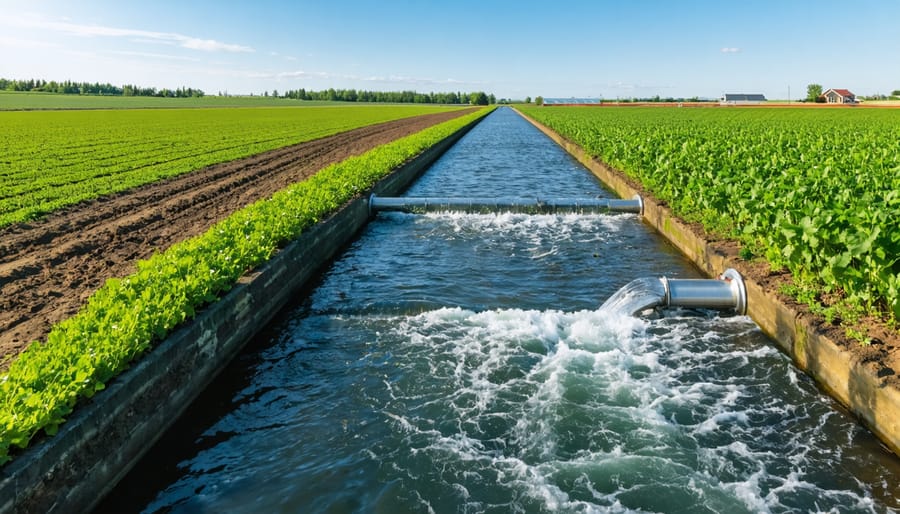Harness two of Alberta’s most abundant renewable resources by combining biomass and geothermal energy systems on your farm. This powerful duo offers year-round energy independence while reducing operational costs by up to 40%. Across the Canadian prairies, innovative farmers are already integrating these technologies, using crop residue and livestock waste to fuel biomass boilers while tapping into the consistent heat flowing beneath their fields through geothermal installations. The strategic pairing of these systems not only provides reliable heating for barns, greenhouses, and grain drying operations but also creates a sustainable cycle where agricultural waste becomes a valuable energy resource. As energy costs continue to rise and climate patterns become less predictable, this hybrid approach offers Alberta farmers a practical path toward energy resilience and environmental stewardship. Whether managing a small family operation or a large-scale agricultural enterprise, implementing these complementary technologies can transform your farm’s energy landscape while maintaining the robust productivity our province is known for.
How Alberta Farms Are Powering Growth with Hybrid Energy
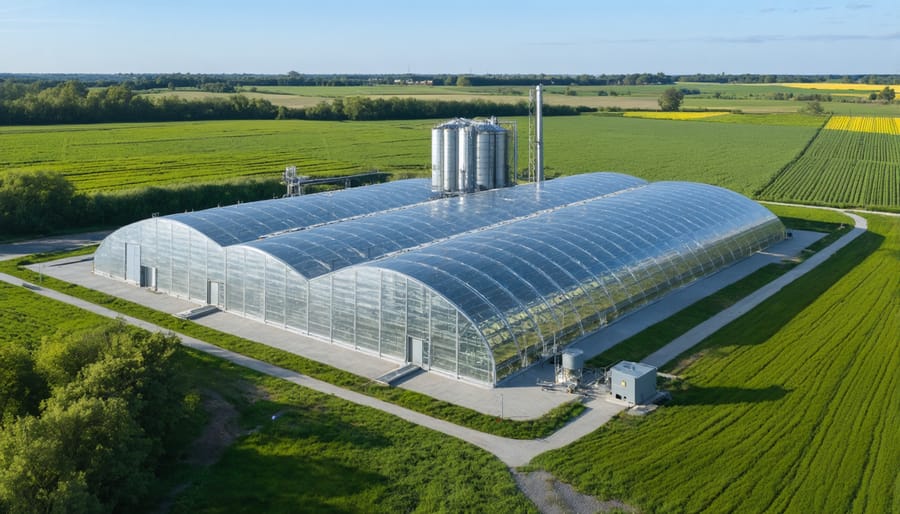
Real Results: The Thompson Family Greenhouse
The Thompson family’s 2-hectare greenhouse operation in Lacombe County stands as a shining example of successful geothermal greenhouse operations combined with biomass heating. Since implementing their hybrid system in 2019, the Thompsons have reduced their heating costs by 65% while extending their growing season by eight weeks.
Their system utilizes locally sourced wood waste from nearby sawmills to fuel a 500 kW biomass boiler, working in tandem with a closed-loop geothermal system that reaches 150 meters below ground. During peak winter months, the biomass component handles 70% of the heating load, while the geothermal system maintains consistent base temperatures year-round.
“The initial investment was significant,” says Mary Thompson, “but the payback period has been shorter than expected thanks to reduced operating costs and increased crop yields.” The family now produces tomatoes, cucumbers, and peppers nearly year-round, supplying local markets and restaurants within a 100-kilometer radius. Their success has inspired five other greenhouse operations in central Alberta to explore similar heating solutions.
Cost Savings Breakdown
When comparing traditional heating systems to a hybrid biomass-geothermal setup, Alberta farmers can expect significant cost reductions. Based on data from local farming operations, the initial investment of $75,000-$100,000 typically pays for itself within 5-7 years through reduced energy costs.
A mid-sized farm operation (approximately 200 hectares) implementing this hybrid system reports average annual savings of $12,000-$15,000 on heating costs. The biomass component, utilizing agricultural waste products like straw and corn stalks, eliminates the need to purchase traditional fuels, while the geothermal system reduces electricity consumption by 50-60% compared to conventional heating methods.
Maintenance costs average $1,500-$2,000 annually, significantly lower than separate systems. Many Alberta farmers also benefit from the Canadian Agricultural Clean Technology Program, which can cover up to 50% of installation costs.
Local farmer Mike Thompson from Red Deer County shares, “Our hybrid system cut our winter heating bills by 70%. We’re using our own crop residue for biomass, and the geothermal component works brilliantly with our greenhouse operations. The savings have been remarkable.”
Smart Integration: Biomass and Geothermal Working Together
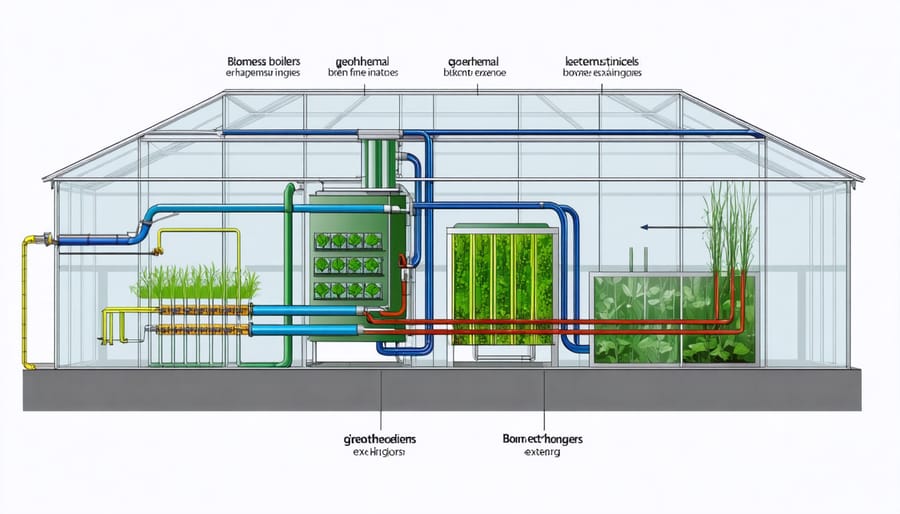
Greenhouse Climate Control
Maintaining optimal greenhouse temperatures year-round in Alberta’s challenging climate becomes significantly more manageable with integrated biomass and geothermal storage solutions. These systems work together to provide consistent, cost-effective climate control that can extend your growing season by up to three months.
The biomass component, typically fueled by agricultural waste or wood pellets, provides primary heating during peak demand periods. Meanwhile, the geothermal system maintains baseline temperatures and can be particularly effective for cooling during summer months. This dual approach has helped operations like Red Deer Valley Greenhouses reduce their heating costs by 40% while maintaining ideal growing conditions between 18-24°C.
Local farmer Sarah Thompson from Lacombe County shares, “We installed our combined system two years ago, and it’s transformed our winter operations. The steady heat from the ground-source system, backed up by our biomass boiler during cold snaps, gives us the confidence to grow year-round.”
The key to success lies in proper system sizing and integration. Start with a comprehensive energy audit to determine your greenhouse’s specific needs. Consider factors like ground temperature variations, which typically range from 5-10°C at depths of 2-3 metres in most Alberta locations, and your greenhouse’s square footage when planning your system.
Soil Heating Systems
Soil heating systems powered by biomass and geothermal energy are transforming how Alberta farmers extend their growing seasons. By circulating warm water through underground pipes, these systems maintain optimal soil temperatures, allowing for earlier spring planting and later fall harvests.
Mark Davidson, a vegetable farmer near Red Deer, implemented a soil heating system in his greenhouse three years ago. “We’re now starting our seedlings six weeks earlier than before, and our tomato production has increased by 30%,” he shares. The system uses wood chips from his woodlot to heat water, which then circulates through a network of pipes buried 30 centimetres below the growing beds.
These systems work particularly well for high-value crops like vegetables and herbs. The consistent soil temperature of 15-20°C creates ideal growing conditions even when outside temperatures drop below freezing. For greenhouse operations, this can mean extending the growing season by up to three months.
Installation costs typically range from $15,000 to $30,000 for a 500-square-metre greenhouse, but many farmers report recovering their investment within three to five years through increased crop yields and reduced heating costs. Local agricultural grants often cover up to 30% of installation costs, making these systems increasingly accessible to small and medium-sized operations.
Remember to consider soil type and drainage when planning your system – sandy soils conduct heat differently than clay-based soils, affecting system efficiency and design requirements.
Getting Started: Practical Steps for Your Farm
Site Assessment
Before investing in a hybrid biomass-geothermal system, it’s crucial to evaluate your farm’s potential for both energy sources. Start by mapping out your available biomass resources, including crop residues, livestock waste, and woodlot materials. A typical Alberta farm producing canola or wheat can generate 2-4 tonnes of residue per hectare annually.
For geothermal assessment, consider having a professional geological survey conducted to determine ground temperature stability and heat conductivity. Most Alberta farms find optimal conditions at depths between 100-150 metres, where ground temperatures typically remain steady at 8-12°C year-round.
Key factors to evaluate include:
– Available space for both systems
– Distance between heat sources and usage points
– Soil composition and drainage patterns
– Existing infrastructure that could be integrated
– Year-round biomass storage capacity
– Local groundwater conditions
Your local agricultural extension office can help connect you with qualified assessors who understand Alberta’s unique geological conditions and agricultural patterns. Many successful installations in our region started with comprehensive site assessments that considered both current needs and future expansion possibilities.
Available Grants and Support
Several funding opportunities are available to support Alberta farmers in implementing biomass and geothermal systems. The Canadian Agricultural Partnership (CAP) offers grants of up to $250,000 for on-farm energy management projects, including biomass heating systems and geothermal installations. Farmers can access these funds through the CAP’s Environmental Stewardship and Climate Change Producer Program.
Alberta’s Energy Efficiency Alberta program provides rebates covering up to 30% of project costs for agricultural operations transitioning to renewable energy systems. The Farm Energy and Agri-Processing Program (FEAP) specifically supports projects that reduce energy consumption and greenhouse gas emissions, offering up to $750,000 in funding per project.
Local agricultural societies and Rural Municipalities of Alberta (RMA) frequently provide additional support through cost-sharing initiatives and technical assistance. The Alberta Environmental Farm Plan (EFP) can help you identify potential funding streams and offers free consultations to assess your operation’s eligibility.
For smaller projects, microgeneration grants are available through the Municipal Climate Change Action Centre, supporting systems up to 150 kilowatts. Remember to consult with your local agricultural fieldman or renewable energy consultant, as they can guide you through the application process and help maximize your funding opportunities.
Applications are typically accepted year-round, but funding is often allocated on a first-come, first-served basis, so early application is recommended.
Finding Qualified Installers
In Alberta, several organizations maintain directories of certified biomass and geothermal system installers. The Thermal Energy Association of Alberta (TEAA) offers a comprehensive list of qualified professionals who have completed specialized training in agricultural applications. These installers understand both the technical requirements and the unique needs of farm operations.
The Canadian GeoExchange Coalition (CGC) provides an additional resource through their national certification program, with many certified installers based in Alberta. Look for professionals who carry both CGC certification and have experience with agricultural installations.
For biomass system installations, the Wood Pellet Association of Canada maintains a network of qualified contractors familiar with agricultural biomass systems. Many of these professionals have completed projects on Alberta farms and can provide local references.
Contact your local agricultural extension office for recommendations and verification of credentials. They often maintain relationships with reliable contractors and can connect you with farmers who have successfully implemented similar systems. Remember to request multiple quotes and ask for detailed project portfolios before making your final selection.
Environmental Impact and Carbon Credits
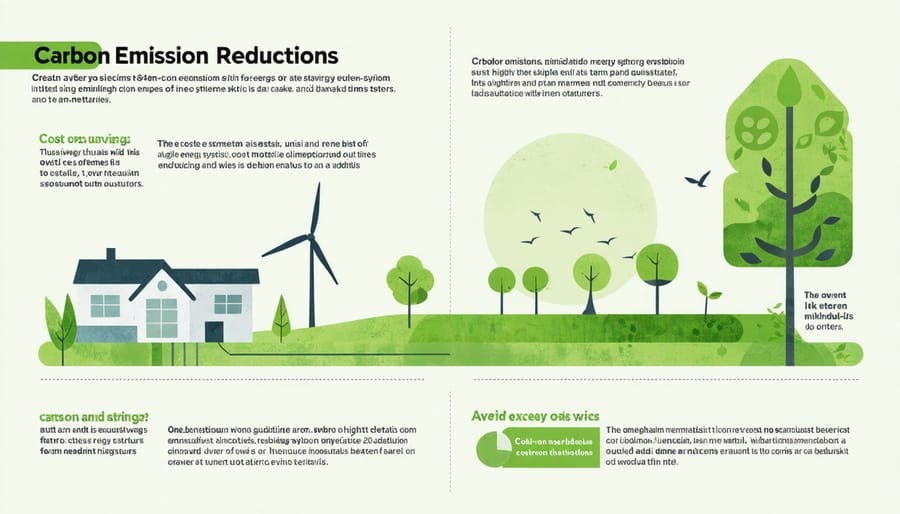
Carbon Credit Programs
Alberta farmers can benefit from several carbon credit programs when implementing biomass and geothermal systems on their operations. The Alberta Emission Offset System allows agricultural producers to earn credits for projects that reduce greenhouse gas emissions. These credits can then be sold to large industrial emitters, creating an additional revenue stream for your farm.
Through the Technology Innovation and Emissions Reduction (TIER) program, farmers can register their biomass and geothermal projects to generate offset credits. Typical projects include switching from fossil fuel heating to biomass systems or implementing ground-source heat pumps for agricultural operations.
The Canada Carbon Offset Credit System, launched in 2022, provides another avenue for Alberta farmers to monetize their sustainable practices. Projects must meet specific criteria and undergo third-party verification, but the program offers competitive rates for verified carbon reductions.
Local agricultural cooperatives often provide support in navigating these programs. For example, the Southern Alberta Energy Cooperative helps members bundle their credits and access better market prices. They also assist with the documentation and verification processes required for program participation.
To get started, contact your local agricultural fieldman or the Alberta Carbon Registries. They can help assess your project’s eligibility and guide you through the application process. Remember to maintain detailed records of your system’s performance and energy consumption, as this data is crucial for credit verification.
Measuring Your Impact
Tracking the impact of your biomass and geothermal systems helps validate your investment and identify areas for optimization. Start by establishing baseline measurements of your energy consumption before installation. Record your monthly heating costs, fuel usage, and greenhouse gas emissions from your previous heating system.
For biomass systems, maintain detailed logs of feedstock consumption, including the types and quantities of biomass used. Track moisture content levels, as this affects efficiency. Many Alberta farmers find success using digital monitoring systems that automatically record these metrics.
For geothermal systems, monitor ground loop temperatures, heat pump performance, and overall system efficiency. Modern systems often come with built-in monitoring capabilities that can be accessed through smartphone apps or web portals.
Calculate your carbon footprint reduction using Natural Resources Canada’s greenhouse gas calculator, which is calibrated for our climate. Document energy cost savings by comparing your current utility bills with previous years’ expenses, accounting for seasonal variations.
Consider joining local agricultural monitoring networks, where farmers share their sustainability data. The Alberta Biomass Producers Network offers free tracking tools and quarterly benchmarking reports to help you measure your progress against similar operations.
Remember to track maintenance costs and system downtimes to get a complete picture of your system’s performance. This data proves valuable when applying for environmental grants or carbon credits through provincial programs.
The integration of biomass and geothermal systems represents a game-changing opportunity for Alberta’s agricultural community. By combining these renewable technologies, farms can significantly reduce their energy costs while contributing to a more sustainable future. The evidence is clear: operations that have implemented these hybrid systems have reported energy savings of up to 60% and decreased their carbon footprint by an average of 40%.
But the benefits extend beyond the environmental and economic advantages. These systems create new revenue streams through biomass byproduct sales and potential carbon credits, while also improving farm resilience against rising energy costs. The success stories from fellow Alberta farmers demonstrate that these systems are not just theoretical solutions – they’re practical, proven technologies that work in our climate.
Now is the time to take action. Start by conducting an energy audit of your operation and connecting with local agricultural extension services. Consider joining forces with neighbouring farms to share resources and knowledge. Provincial grants and federal clean energy incentives are available to help offset initial installation costs, making this an ideal time to invest in your farm’s future.
Together, we can build a more sustainable and prosperous agricultural sector in Alberta. Whether you’re ready to implement a full hybrid system or starting with smaller components, every step toward renewable energy adoption counts. Reach out to your local agricultural association today to learn how you can begin your journey toward energy independence.

